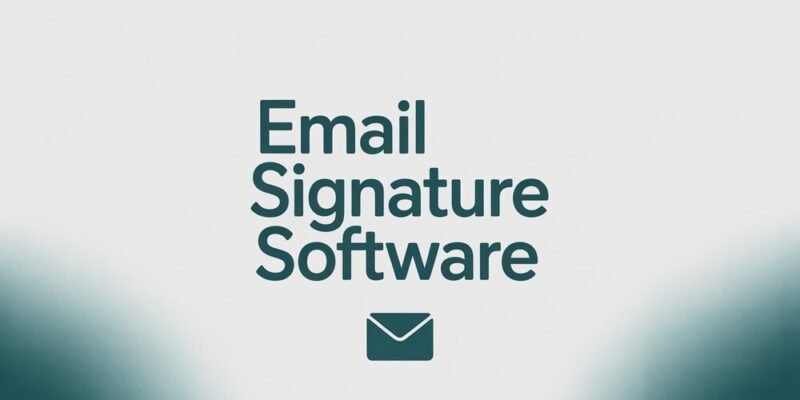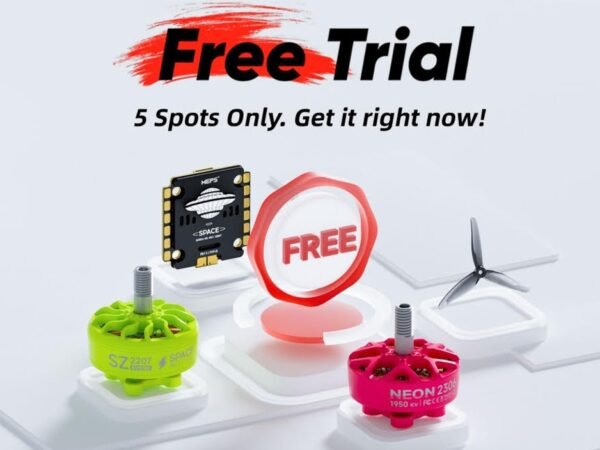In today’s fast-paced digital landscape, email remains a dominant communication tool for businesses of all sizes. While organizations invest heavily in email marketing, cybersecurity, and customer relationship management, one often overlooked asset is the email signature—a simple yet powerful tool that, when used effectively, can boost branding, improve professionalism, and streamline communication. That’s where email signature software comes into play.
What is Email Signature Software?
Email signature software is a digital tool or platform that enables organizations to create, manage, and deploy standardized email signatures across all employee communications. Rather than relying on individuals to manually insert and format their signatures, these platforms automate the process, ensuring brand consistency and providing central control for updates, design elements, disclaimers, and promotional banners.
Why Email Signatures Matter
Email signatures are more than just a sign-off; they are a branding and marketing opportunity. A well-designed email signature can include:
- The sender’s name, job title, and contact information
- Company logo and brand colors
- Legal disclaimers or confidentiality notices
- Social media icons and links
- Promotional banners, CTAs, or events
An average employee sends hundreds of emails monthly, so the email signature becomes a scalable marketing channel. Multiply that by hundreds or thousands of employees, and you have a high-impact, cost-effective branding opportunity.
Benefits of Email Signature Software
Brand Consistency
One of the most significant advantages of email signature software is brand consistency. Employees often use different fonts, colors, or outdated logos without centralized management, leading to an unprofessional and inconsistent brand image. Email signature software ensures that every email aligns with the company’s branding guidelines, regardless of the sender.
Centralized Management
IT or marketing teams can easily manage, update, and deploy signature templates from a central dashboard. Whether launching a new logo, updating contact information, or promoting a campaign, changes can be made company-wide instantly without relying on manual updates.
Enhanced Marketing and Engagement
Signatures can be used as a subtle but effective marketing tool. You can insert banners for promotions, links to new blog posts, or invitations to webinars—all embedded within everyday business emails. This approach turns routine communication into marketing real estate.
Professionalism and Credibility
A consistent, well-designed email signature builds trust. It reassures recipients that they are dealing with a reputable organization. For businesses that handle sensitive information or operate in regulated industries, including compliance disclaimers further reinforces professionalism.
Analytics and Campaign Tracking
Advanced email signature software often includes analytics tools that track engagement with banners, links, or CTAs in the signature. This data can inform future marketing campaigns and help measure the ROI of signature-based promotions.
Regulatory Compliance
For legal, financial, and healthcare industries, email compliance is non-negotiable. Signature software helps organizations automatically include disclaimers, legal notices, or compliance statements in every outgoing email.
Time and Cost Efficiency
Managing email signatures manually is time-consuming and error-prone. Signature software automates the entire process, saving IT departments time and reducing the potential for costly mistakes or outdated information.
Key Features to Look For
When choosing an email signature solution, look for these core features:
- Template Builder: A drag-and-drop or WYSIWYG editor for designing custom templates without needing HTML skills.
- Directory Integration: Sync with Microsoft 365, Google Workspace, or Active Directory to automatically pull user data into signatures.
- Centralized Dashboard: Allows IT or marketing teams to manage all signatures from one interface.
- Compatibility: Ensure it supports all devices (desktop, mobile, webmail) and integrates seamlessly with your email platform.
- Campaign Management: Ability to create and schedule marketing banners or seasonal messages.
- Analytics and Reporting: Tracks clicks, impressions, and performance of signature campaigns.
- Compliance Tools: Allows insertion of legal notices tailored by department, location, or role.
Popular Use Cases
Marketing and Promotions
Companies often use email signature banners to promote new products, highlight case studies, or drive webinar registrations. Since recipients already engage with the email, these subtle messages can have higher conversion rates than traditional advertising.
Internal Communication
Organizations can also use signatures internally for company announcements, policy updates, or links to training materials. Tailored internal signatures keep employees informed without spamming their inboxes with separate emails.
Recruiting and Employer Branding
Showcasing “We’re Hiring!” banners or awards like “Best Place to Work” in employee signatures can enhance employer branding and attract potential talent.
Customer Support and Feedback
Customer service teams can include satisfaction surveys or “Rate our service” links in their signatures, collecting real-time feedback without interrupting the customer experience.
Choosing the Right Email Signature Software
There are dozens of email signature tools on the market. Here are a few of the most popular:
- Exclaimer: Highly scalable, with strong Microsoft 365 integration, ideal for enterprises.
- WiseStamp: Great for small to medium businesses and individual professionals.
- CodeTwo: Known for flexibility and excellent for Office 365 environments.
- Xink: Offers advanced marketing tools and detailed analytics.
- Rocketseed: Strong focus on marketing banners and engagement metrics.
When choosing software, consider the size of your team, your email provider (Microsoft 365, Gmail, etc.), your marketing goals, and any compliance needs.
Potential Challenges
Despite its advantages, implementing email signature software comes with potential challenges:
- Initial Setup: Depending on the tool and size of your organization, setup may require coordination between IT and marketing.
- User Adoption: Employees may resist changes or need training on using the new signature system, though most are automated.
- Cost: Some enterprise-grade platforms can be costly, though the ROI from improved branding and efficiency often outweighs this.
Final Thoughts
Email signature software transforms a basic business necessity into a strategic asset. It’s an easy-to-implement, scalable, and cost-effective way to maintain brand consistency, engage customers, and streamline department communication. Whether you’re a small business or a global enterprise, standardizing and optimizing email signatures can deliver significant returns in branding, marketing, and professionalism.
Do Read: Understanding BIM Standards: Ensuring Consistency and Compliance Across AEC Projects













